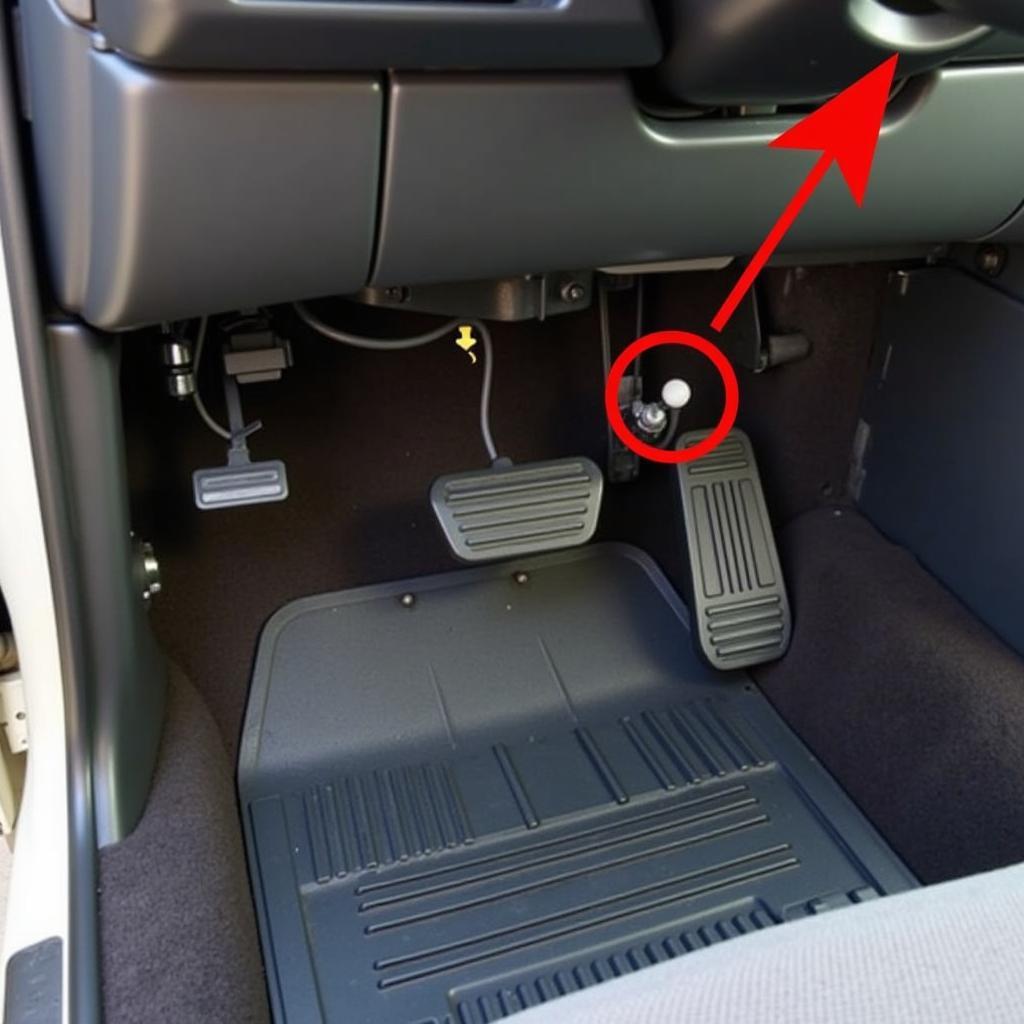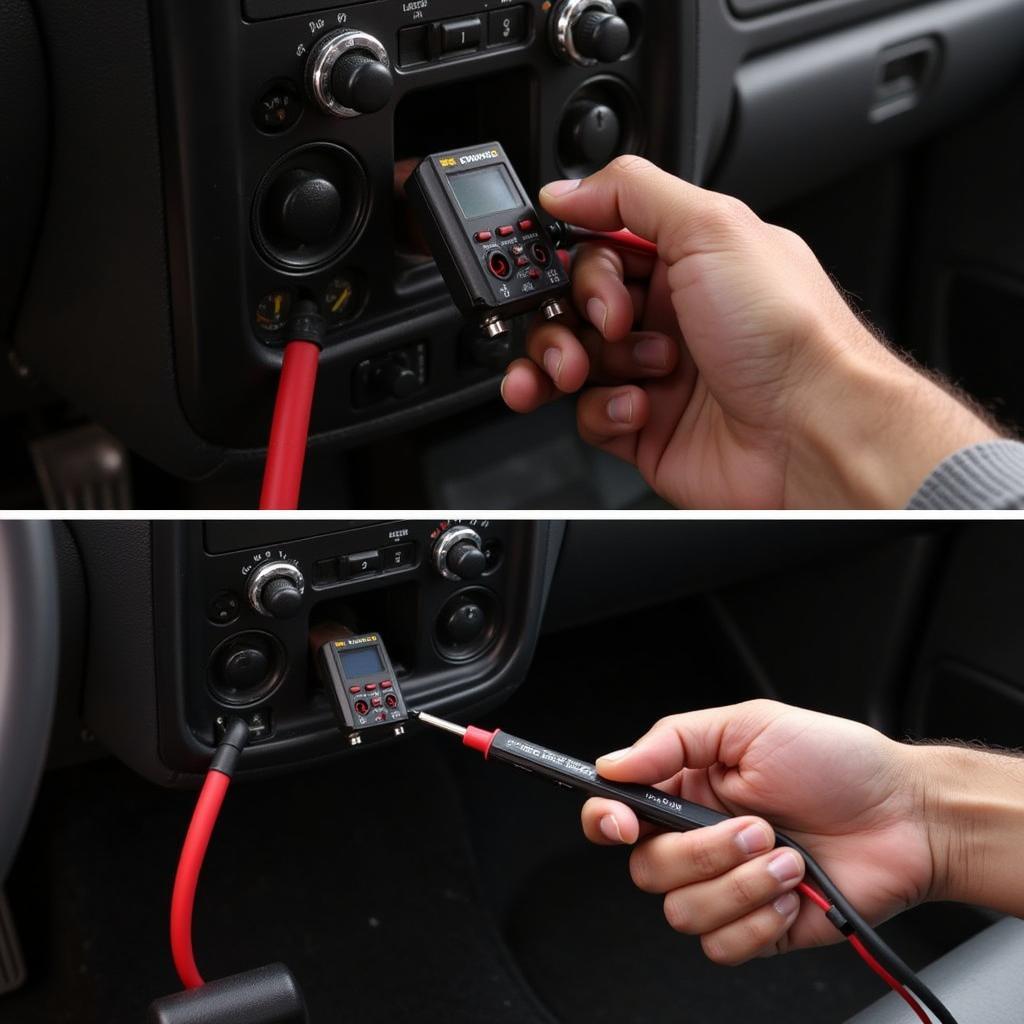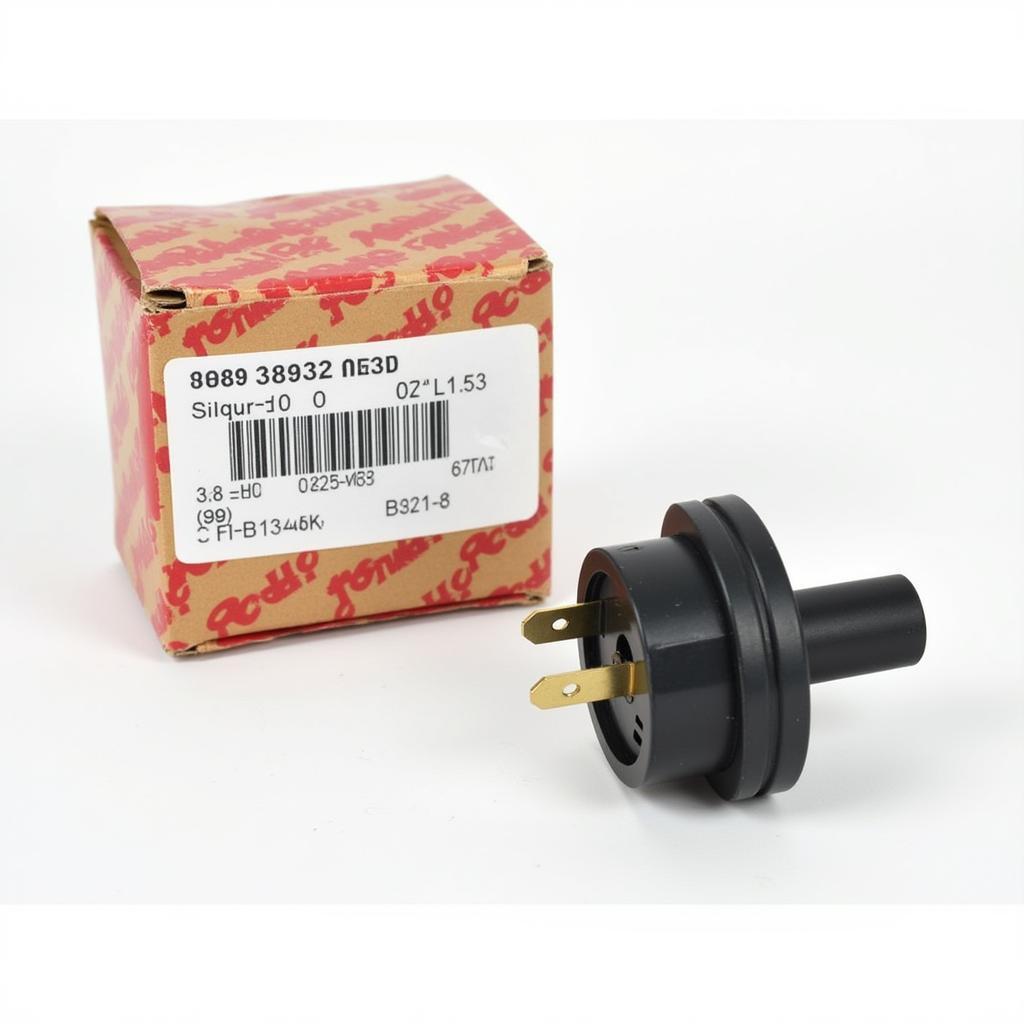If you drive a 1989 Chevrolet Silverado, you understand the importance of a reliable braking system. A crucial component of this system is the brake warning switch, which alerts you to potential problems that require immediate attention. When this switch malfunctions, it can lead to a frustrating and potentially dangerous situation. This guide will walk you through the common issues associated with a faulty brake warning switch on a 1989 Silverado, empowering you to diagnose and potentially fix the problem yourself.
Understanding the Brake Warning Switch
The brake warning switch is a small but vital part of your truck’s braking system. It’s responsible for activating the brake warning light on your dashboard when it detects a change in pressure within the hydraulic braking system. This change usually occurs when you depress the brake pedal.
There are two main functions of this switch:
- Warning of Low Brake Fluid: A lit brake warning light often indicates a leak in your brake lines, leading to a drop in brake fluid level. Ignoring this warning can lead to brake failure.
- Indication of Parking Brake Engagement: The switch also illuminates the warning light when the parking brake is engaged, reminding you to disengage it before driving.
 1989 Silverado Brake Warning Switch Location
1989 Silverado Brake Warning Switch Location
Common Symptoms of a Faulty Brake Warning Switch in a 1989 Silverado
Recognizing the signs of a failing brake warning switch is crucial. While a continuously illuminated brake warning light is the most obvious sign, other symptoms include:
- Brake Light Malfunction: The brake lights may stay on constantly or fail to illuminate when the brake pedal is pressed.
- Erratic Warning Light: The brake warning light may flicker intermittently, even when the brake pedal isn’t engaged.
- Difficulty Shifting from Park: In some cases, a faulty brake warning switch can prevent the gear shifter from moving out of the “Park” position.
Diagnosing the Issue: Is it Really the Brake Warning Switch?
Before replacing the brake warning switch, it’s important to ensure it’s the root cause of the problem. Follow these diagnostic steps:
- Check Brake Fluid Level: A low brake fluid level can trigger the brake warning light. Inspect the brake fluid reservoir under the hood – if it’s low, there might be a leak in your brake system. Address this issue immediately.
- Inspect the Parking Brake: Ensure the parking brake is fully disengaged. Even a slight engagement can illuminate the warning light.
- Test the Brake Light Switch: Locate the brake light switch, usually above the brake pedal arm. With the ignition on, depress and release the brake pedal while observing the brake lights. If they don’t illuminate, the brake light switch may need replacement.
 Testing Brake Light Switch on a 1989 Silverado
Testing Brake Light Switch on a 1989 Silverado
Replacing the Brake Warning Switch on your 1989 Silverado: A Step-by-Step Guide
If the previous steps haven’t pinpointed a different culprit and you suspect a faulty brake warning switch, replacing it is a relatively straightforward procedure.
Tools You’ll Need:
- New brake warning switch (compatible with a 1989 Silverado)
- Socket wrench set
- Pliers
Procedure:
- Disconnect the Battery: Disconnect the negative battery cable to prevent electrical shorts.
- Locate the Switch: The brake warning switch is typically located above the brake pedal arm, connected to the brake pedal assembly.
- Disconnect the Electrical Connector: Carefully detach the electrical connector from the switch.
- Remove the Old Switch: Use a socket wrench to loosen and remove the old switch from the brake pedal assembly.
- Install the New Switch: Thread the new brake warning switch into the assembly and tighten it securely.
- Reconnect the Electrical Connector: Reattach the electrical connector to the new switch.
- Reconnect the Battery: Reconnect the negative battery cable.
- Test the New Switch: Turn on the ignition and depress the brake pedal. The brake lights should illuminate, and the warning light should turn off when the pedal is released.
 New Brake Warning Switch for 1989 Silverado
New Brake Warning Switch for 1989 Silverado
When In Doubt, Consult a Professional
While replacing the brake warning switch is a manageable DIY task for many, if you encounter any difficulties or are uncomfortable performing this repair yourself, it’s always best to consult a qualified mechanic.
Remember: A properly functioning brake system is paramount for your safety and the safety of others on the road. Never ignore warning signs of brake problems. Addressing them promptly ensures safe and worry-free driving.
